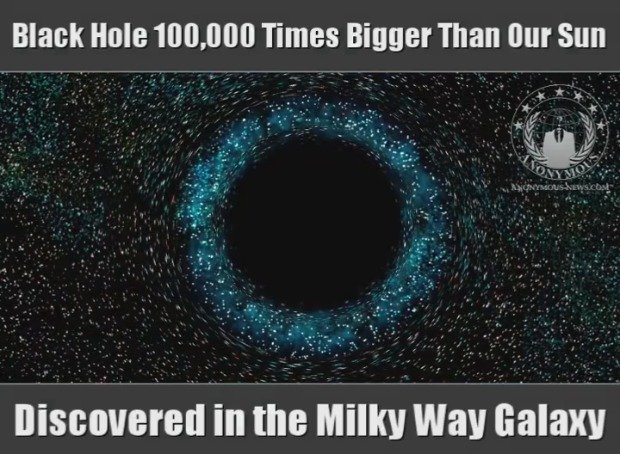
Planetologists have discovered a black hole, which weighs 100,000 times the mass of the Sun, located near the center of the Milky Way.
Astronomers from Keio University, Japan, say the object looks like the largest intermediate-mass black hole (IMBH), which are considered to be the missing links in the development of the heavenly objects. Studying the newly discovered object will help experts determine the causes that lead to the birth of such humongous black holes, they add.

Dr Tomoharu Oka and his team found a special molecular cloud near the center of our galaxy; it stood out because it displayed different properties when compared to molecular clouds of its type. Oka told IFLScience:
“This is the first detection of an intermediate-mass black hole (IMBH) candidate in our Milky Way Galaxy. This supports the emerging scenario of the formation/evolution of super massive black holes in galactic centers.”
The astronomers studied the object using simulations, such as Common Astronomy Software Applications, where they further studied the black hole and filed it as a possible IMBH. They revealed the super-massive black hole is not currently gathering particles via its gravitational pull.

The scientists say if the object is an IMBH, then it is just behind Sagittarius A, which is Milky Way’s super-massive black hole over 4 million times the mass of the Sun. They also suggest finding an IMBH is going to open new doors for research:
“It is widely accepted that black holes with masses greater than a million solar masses lurk at the centers of massive galaxies. The origins of such ‘super massive’ black holes (SMBHs) remain unknown. Theoretical studies have predicted that 100 million to 1 billion black holes should exist in the Milky Way, although only 60 or so have been identified through observations so far.

“Further detection of such compact high-velocity features in various environments may increase the number of non-luminous black hole candidate and thereby increase targets to search for evidential proof of general relativity. This would make a considerable contribution to the progress of modern physics.”
► Watch on DTube
► Watch Source (IPFS)
Hi! I am a robot. I just upvoted you! I found similar content that readers might be interested in:
http://anonymous-news.com/black-hole-100000-times-the-mass-of-the-sun-discovered-within-the-milky-way/